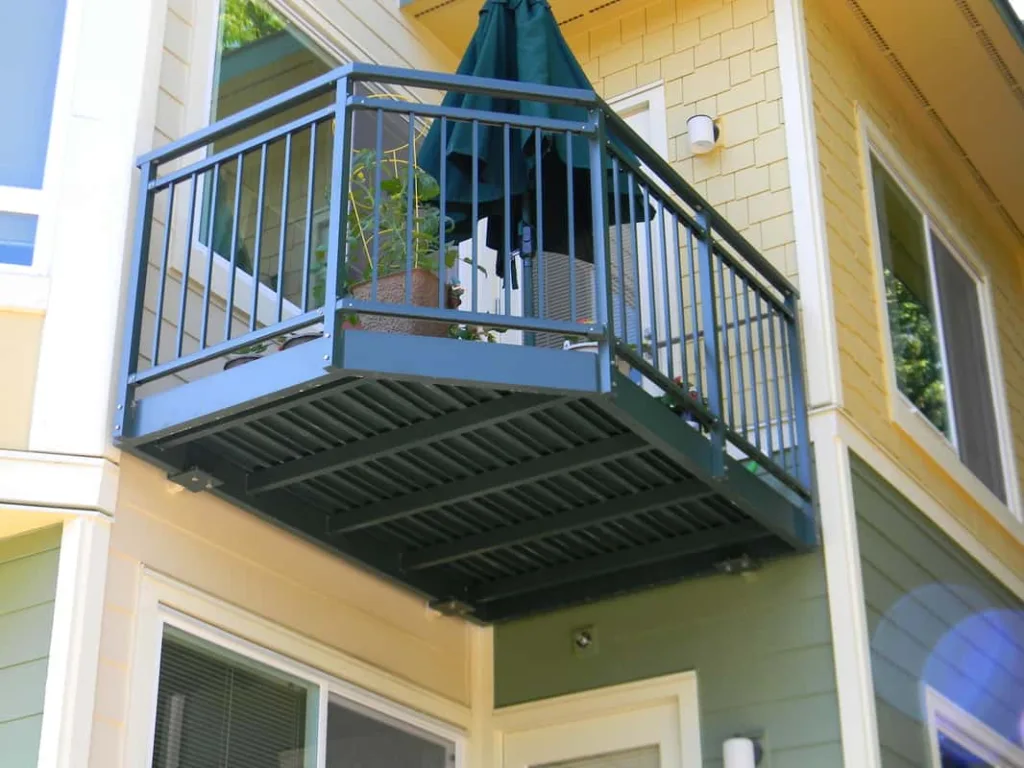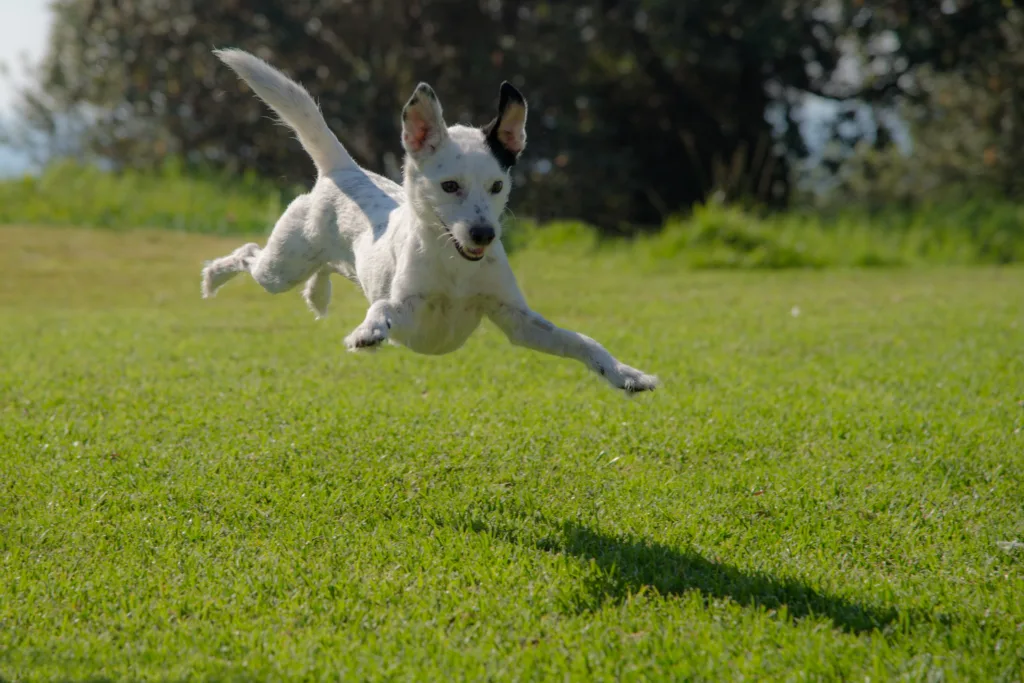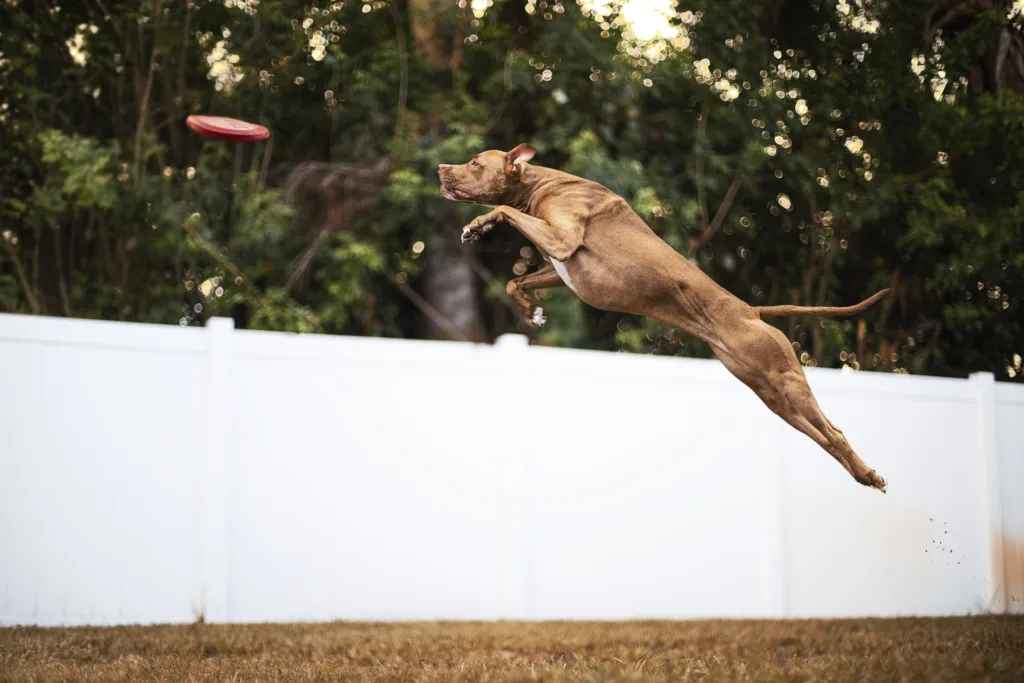As pet owners, we all want to provide our furry friends with the best possible living conditions. However, if you live in an apartment or a house with a balcony, you need to be aware of the risks and dangers your pet may face. One of the most significant hazards is the possibility of your dog jumping off the balcony.
Sadly, this is not an uncommon occurrence. Dogs, especially puppies or those with vision problems, may not understand the dangers of heights and can easily jump off a balcony. In some cases, dogs may become agitated, excited, or scared and jump off the balcony without warning. This can lead to serious injuries or even death.
According to Dr. Melissa Olson, a veterinary behaviorist, dogs can suffer from soft-tissue sprains and facial injuries such as trauma to the nose, teeth, split palates, and broken jaws. Even if your pet survives the fall, it may run away and get lost, which is why microchipping your pet is essential.
To prevent your pet from jumping off the balcony, it’s crucial to dog-proof the balcony railing. Here are some tips to help you keep your pet safe:
1. Balcony netting for dogs is an excellent start to prevent them from jumping off. You can easily find balcony netting at pet stores or online.
2. You can also use plexiglass panels to create a barrier between your pet and the balcony edge.
3. Consider furniture placement on the balcony to prevent your pet from accessing the balcony railing.
4. You can use collar bumpers to make it difficult for your pet to fit its head through the railing.
5. Be mindful of storage on the balcony, as your pet may use it to jump onto the railing.
6. You can also create a DIY bamboo fence to create a physical barrier between your pet and the balcony edge.
7. Be careful with plants on the balcony, as some may be toxic to pets. Ensure they are out of reach and placed in sturdy pots.
8. Protect your BBQ and other balcony objects that may attract your pet’s attention.
In addition to the above, it’s essential to provide your pet with an outdoor potty spot. This can be as simple as a pee pad in the balcony corner or as elaborate as a dog litter box lined with artificial grass. However, ensure that the potty spot will contain your dog’s business rather than allowing it to fall on the balcony below. Choose something easy to clean, and your pet will tank you.
Taking the necessary steps to dog-proof your balcony will help keep your pet safe and prevent any unfortunate accidents. As a responsible pet owner, it’s your responsibility to provide your pet with a safe and comfortable living environment.
The Dangers of Allowing a Dog to Jump Off a Balcony
You should definitely worry about your dog jumping off the balcony. Jumping off a balcony can cause serious injuries or even death to your pet. Even if your dog has successfully jumped off the balcony before, there is always a risk of injury or death. The height of the balcony and the surface beow can greatly affect the severity of injuries. Additionally, jumping off the balcony can also cause soft-tissue sprains and facial injuries like trauma to the nose and teeth, split palates and broken jaws. Even if your pet isn’t injured in a fall, she may run away and get lost. Therefore, it is important to keep your pets away from balconies or to install safety barriers to prevent them from jumping off.

The Dangers of Dogs Jumping Off Balconies
It is not common for dogs to jump off balconies, especially for adult dogs. Dogs have a natural understanding of heights and are typically cautious when it comes to situations that coud put them in danger. However, there are certain circumstances where dogs may be more likely to jump off a balcony. For example, puppies or dogs with vision problems may not understand the risks associated with heights and may accidentally jump off a balcony. Additionally, dogs that are agitated or frightened may also be more likely to jump off a balcony in an attempt to escape the situation. As a responsible pet owner, it is important to take precautions to prevent accidents from happening, such as ensuring that balconies are properly secured and supervising dogs when they are on balconies.
Preventing Dogs from Falling Off Balconies
Keeping your dog from falling off the balcony is crucial for their safety. Here are some effective ways to dog-proof your balcony railing:
1. Balcony Netting: Installing balcony netting is an excellent way to prevent your dog from jumping off the balcony. It’s a cost-effective and easy solution to keep your furry friend safe.
2. Plexiglass Panels: You can also use plexiglass panels to protect your dog from falling off the balcony. These panels provide a clear view without compromising safety.
3. Furniture Placement: Consider rearranging your balcony furniture to create a barrier between your dog and the railing. This way, your dog will not have access to the railing.
4. Collar Bumpers: You can also use collar bumpers to prevent your dog from slipping though the railing. These bumpers are made of foam or rubber and can be attached to the collar.
5. Storage: Keep any items that your dog can climb on or chew on away from the balcony area. This includes chairs, tables, and plants.
6. DIY Bamboo Fence: If you want a more natural look for your balcony, you can create a DIY bamboo fence. This is an affordable and easy way to keep your dog safe.
7. Be Careful with Your Plants: Make sure the plants you have on your balcony are safe for your dog. Some plants are toxic and can be harmful to your furry friend.
8. Protecting BBQs and Other Balcony Objects: Keep any objects that your dog can knock over or chew on away from the balcony area. This includes BBQs, grills, and other objects that can be dangerous if knocked over.
By implementing these measures, you can ensure that your furry friend is safe on your balcony.
Making an Apartment Balcony Safe for Dogs
Ensuring your apartment balcony is safe for your furry friend is crucial to their wellbeing. Here are a few steps you can take to make your balcony a safe and enjoyable space for your dog:
1. Check for gaps or holes: Inspect your balcony for any gaps or holes that your dog could squeeze through or get stuck in. Fill any gaps or holes with a durable material such as wire mesh or plexiglass.
2. Secure the railing: Ensure your balcony railing is secure and high enough to prevent your dog from jumping over it. If the railing is not high enough, considr installing additional fencing or netting.
3. Remove toxic plants: Some plants can be toxic to dogs if ingested. Make sure to remove any poisonous plants from your balcony and replace them with safe ones.
4. Provide shade and water: Ensure your dog has access to shade and water while on the balcony. Install a shade sail or provide a sun umbrella to protect your dog from the sun’s harmful rays. A water bowl should also be provided to keep your dog hydrated.
5. Use a leash or harness: When your dog is on the balcony, use a leash or harness to prevent them from wandering off or jumping off the balcony.
By following these simple steps, you can create a safe and enjoyable space for your furry friend on your apartment balcony. Remember to always supervise your dog when they are on the balcony to ensure their safety.
The Maximum Height a Dog Can Jump Without Injury
Dogs are naturally athletic animals with powerful leg muscles. Most dogs can jump about one to three times their height without causing any harm or injury to themselves. For example, a small breed dog like a Jack Russell Terrier can jump up to 5 feet high, while a larger breed dog like a German Shepherd can jump up to 6 feet high. However, it is important to note that a dog’s ability to jump without getting hurt depends on their age, fitness level, and oveall health. Older dogs or those with joint problems may not be able to jump as high as younger, healthier dogs without experiencing pain or discomfort. Additionally, some dogs may have a natural inclination towards jumping, while others may require training to develop their jumping abilities. it is important to monitor your dog’s behavior and physical condition to ensure they are not pushing themselves beyond their limits and risking injury.

The Risk of Injury From Dog Jumping
Dogs can get injured from jumping. Jumping puts extra stress on their joints, especially if they are jumping on hard surfaces or from heights that are too high for their size and physical condition. The most common injuries are sprains, strains, and fractures. Over time, jumping can also lead to joint problems like arthritis. However, if the surfaces and heights are within a safe range, your dog is healthy, and you don’t overdo it, jumping is relatively safe. You should aways monitor your dog’s jumping activity, and if you notice any signs of discomfort or injury, you should seek veterinary attention. Additionally, it’s important to provide your dog with proper warm-up and cool-down exercises before and after any jumping activity to reduce the risk of injury.
The Effects of Kneeling a Dog When They Jump
From a training perspective, kneeing your dog when they jump is not recommended. It can be harmful and cuse injuries to your dog. Additionally, it can create fear and anxiety in your dog, which can lead to more behavioral problems. Instead, it is suggested to use positive reinforcement training to discourage jumping behavior. This involves rewarding your dog for calm and polite behavior and ignoring or redirecting them when they jump. You can also teach your dog alternative behaviors such as sitting or offering a toy or treat to redirect their attention. Consistency, patience, and positive reinforcement are essential in training your dog to stop jumping.
Reasons Why Dogs Should Not Go Upstairs
Dogs can go upstairs, and it is a common activity for many of them. However, as mentioned earlier, it may require greater range of motion in their joints, which can be challenging for older dogs or thse with mobility issues. If your dog is showing signs of discomfort or stiffness, it’s best to consult with a veterinarian to determine the underlying cause and proper treatment. Additionally, it’s essential to ensure the stairs are safe for your dog, free of any obstacles or potential hazards that could cause injury.
Do Dogs Have a Sense of Height?
Dogs do have a sense of height, but they perceive it differently than humans. Dogs have a well-developed sense of balance and coordination that allws them to navigate and move around in various environments, including heights. However, their perception of height is based more on visual cues and their body’s proprioception rather than a conscious understanding of height differences.
For example, when a dog jumps off a high surface, they are not necessarily thinking about the height of the surface, but rather they are using their instinctual ability to judge distance and their body’s ability to adjust for the landing. Dogs also rely on their keen sense of smell to navigate their environment, which can help them determine spatial relationships and distances.
While dogs may not have the same conscious perception of height as humans, they do have a well-developed sense of balance, coordination, and spatial awareness that allows them to navigate various environments, including heights.

Making a Balcony Pet-Safe
Making your balcony pet safe requires some careful planning and attention to detail. Here are some steps you can take to ensure your furry friend is safe and comfortable:
1. Soft surfaces: Just like inside your house, pets need a comfortable place to rest. Consider adding soft blankets or pillows to your balcony to make it more inviting for your pet.
2. Outdoor rug: Adding an outdoor rug can create a designated space for your pet to relax and play. It also provides a non-slip surface for your pet to walk on.
3. Peek-through spot: Cats love to watch the world go by, so consider creating a peek-through spot whre they can look out over the balcony. This can be achieved by adding a small window or a cut-out in a wall.
4. Towering throne: Cats love to climb and perch up high. Consider adding a cat tree or a tall perch where your cat can climb up and survey their surroundings.
5. Cat-proof ledges: Ensure any ledges or railings are secure and high enough to prevent your pet from falling off. You can also add netting or other barriers to keep your pet safe.
6. Mini catio: If you have the space, consider building a small catio or enclosed area where your pet can enjoy the outdoors safely.
7. Netting: If your balcony is open to the outside, you may want to consider adding netting to prevent your pet from escaping or falling off.
8. Toxic plants: Be aware of any toxic plants that may be on your balcony and remove them immediately. Some common toxic plants include lilies, azaleas, and tulips.
By following these tips, you can create a safe and enjoyable space for your pet to enjoy the outdoors while keeping them secure and protected.
Do Dogs Prefer Stairs or Ramps?
Dogs’ preferences for stairs or ramps largely depend on their age, size, and physical condition. Older dogs and those with joint problems tend to prefer ramps because they place less stress on their joints and muscles. Ramps also allow these dogs to avoid the jarring impact that can occur when they jump down from stairs. Additionally, smaller dog breeds may still have short legs that make it difficult for them to navigate stairs comfortably, making ramps a more suitable option.
On the oter hand, some dogs may prefer stairs because they are more familiar with them or find them easier to navigate. For example, dogs with good mobility and no joint problems may prefer stairs because they can climb them quickly and easily. Additionally, dogs that are used to climbing stairs may find ramps to be unfamiliar or intimidating, which could lead to hesitation or reluctance to use them.
Ultimately, the preference for stairs or ramps will vary from dog to dog, and it is important to consider each individual dog’s physical abilities and comfort level when choosing between the two.
Dealing with a Dog That Is Falling Over
If your dog is falling over, it is important to call your vet immediately. Falling over can be a sign of injury, stroke, poisoning, or infection, all of which can be dangerous or even life threatening. Your vet will be able to diagnose the underlying caue of your dog’s loss of balance and provide appropriate treatment. In the meantime, it is important to keep your dog calm and comfortable, and prevent it from injuring itself further. Restricting your dog’s movement and keeping it in a quiet, dark room can be helpful. Remember, prompt veterinary care is crucial in ensuring the best possible outcome for your furry friend.
Conclusion
Allowing your dog access to a balcony can pose serious risks and dangers. The potential for falls, injuries, and lost pets is high, especially for puppies or dogs with vision problems or when agitated. However, by taking appropriate measures to dog-proof your balcony, you can greatly reduce the risks. Installing balcony netting or plexiglass panels, rearranging furniture, usng collar bumpers, and being mindful of plant and object placement can all help prevent your dog from jumping off the balcony. Additionally, providing an outdoor potty spot can help keep your balcony clean and safe for both your dog and your neighbors. By being proactive and taking these precautions, you can ensure that your furry friend can safely enjoy spending time with you on your balcony.
